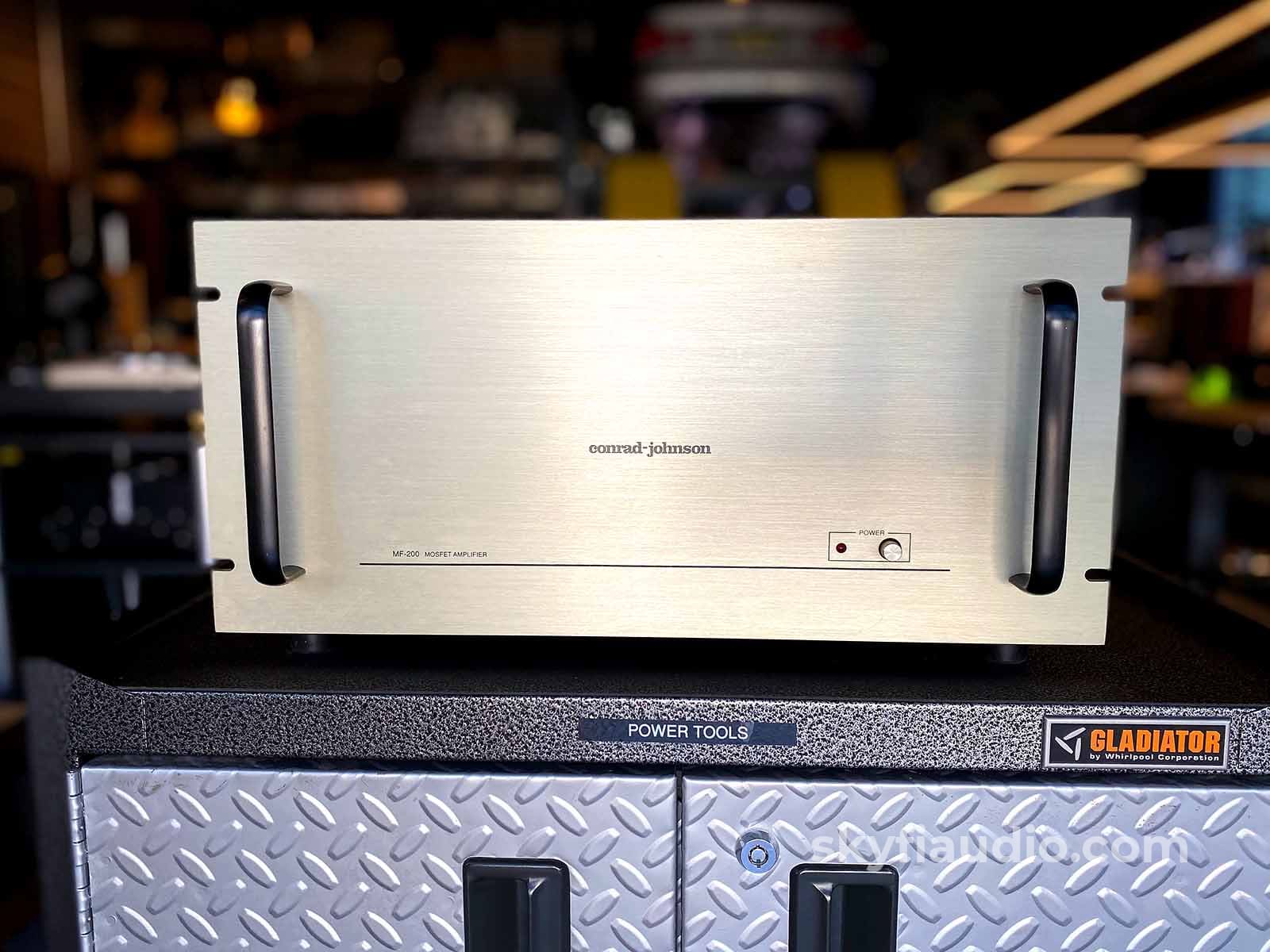
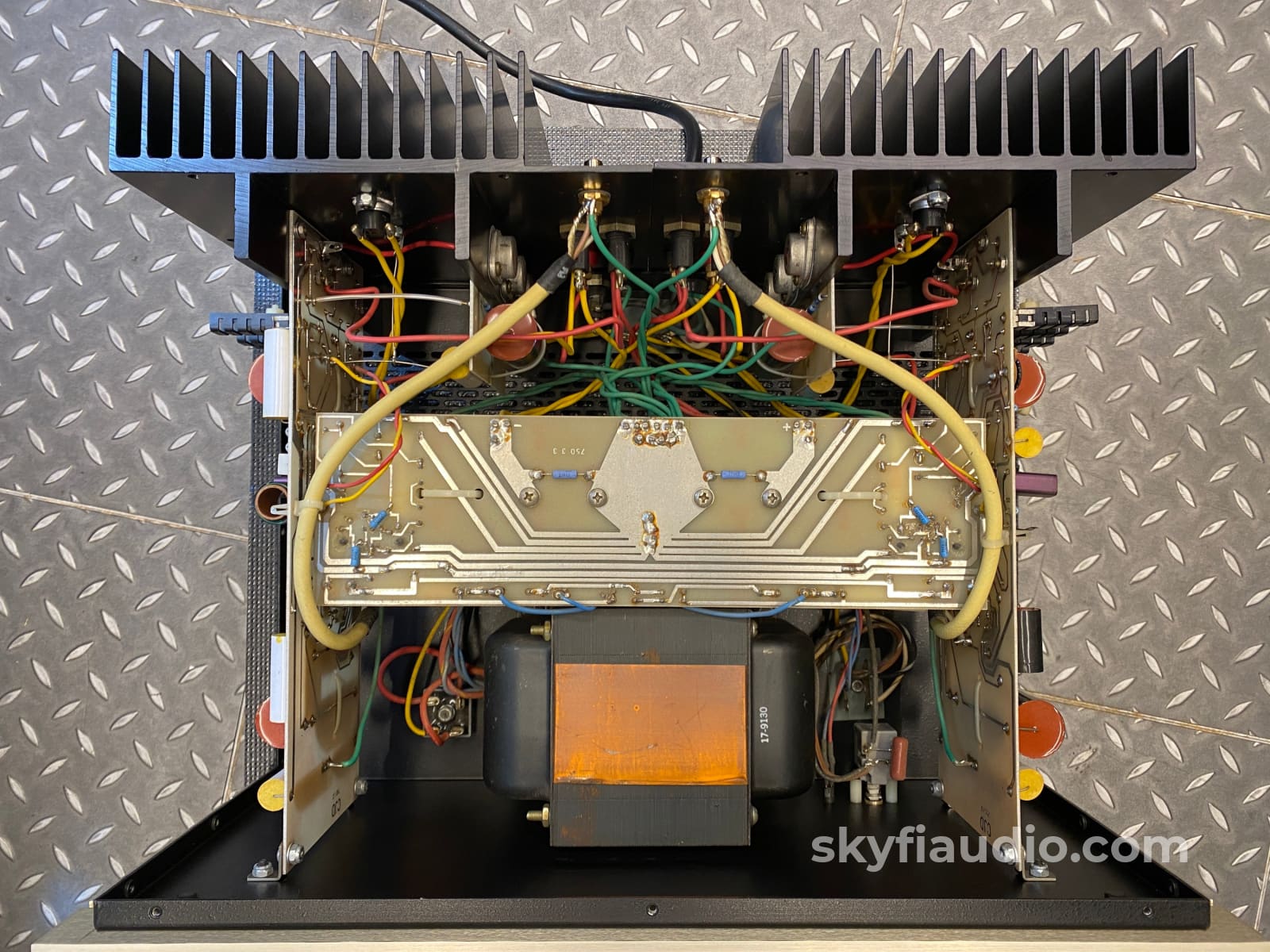
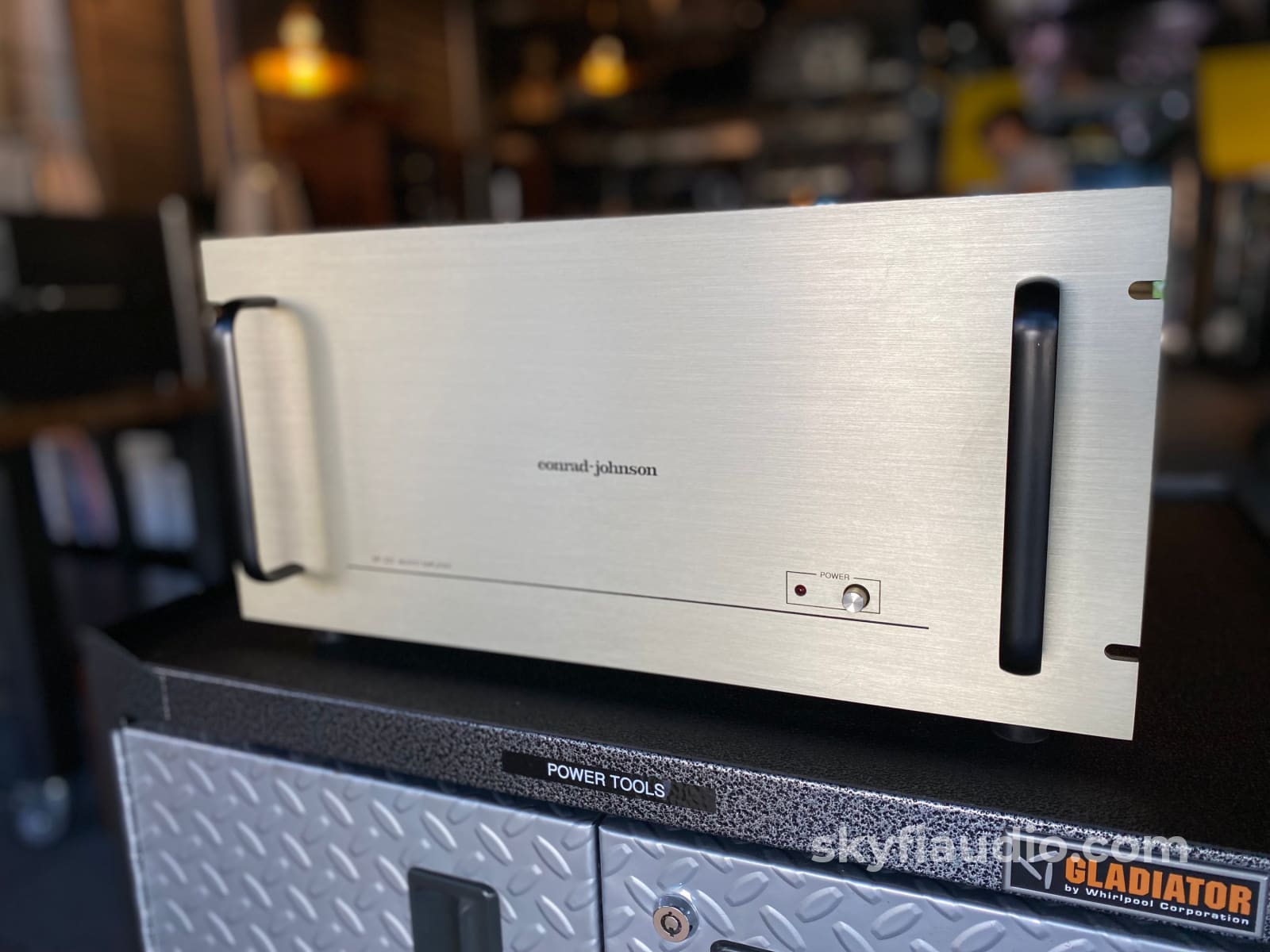
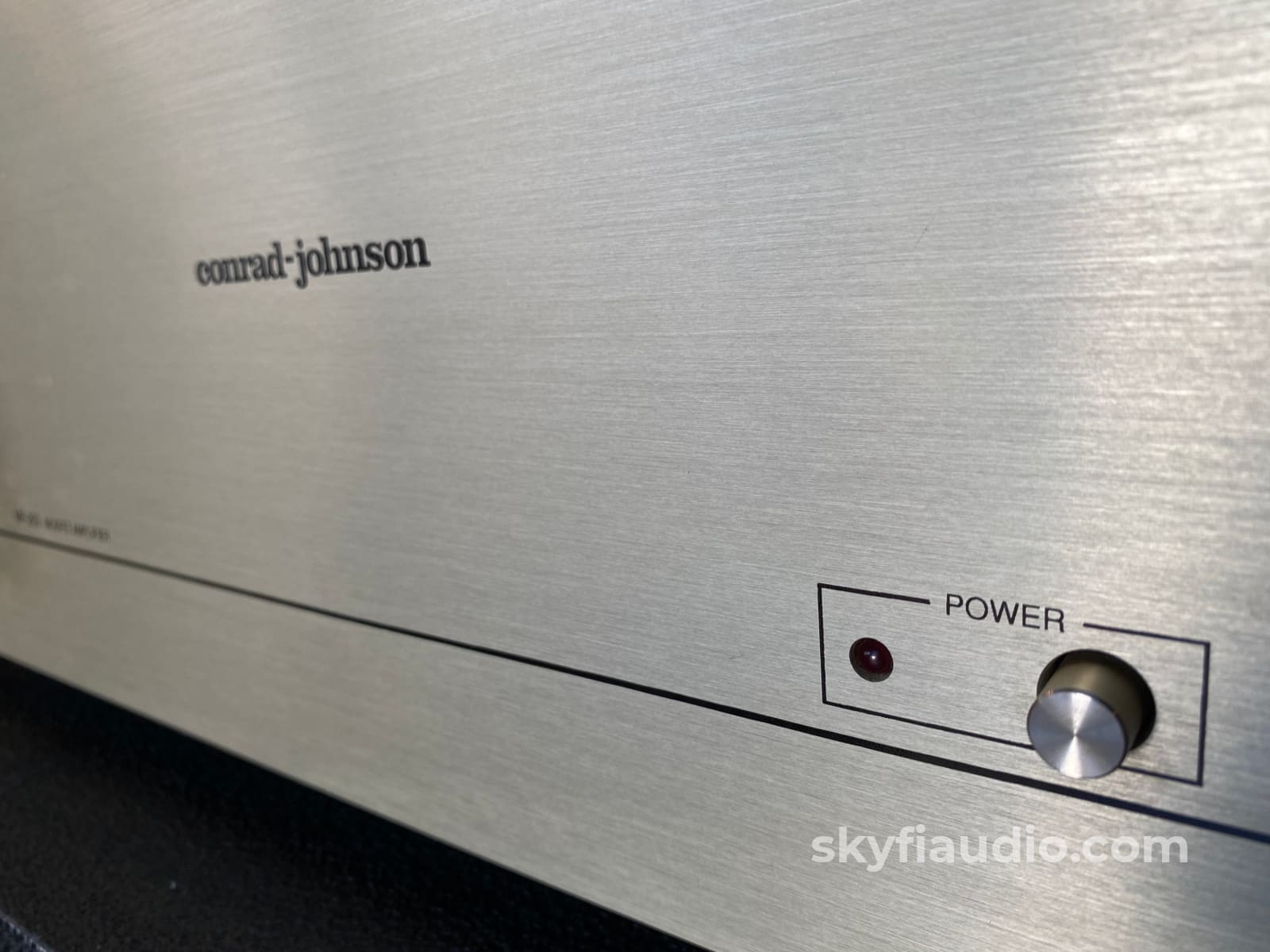
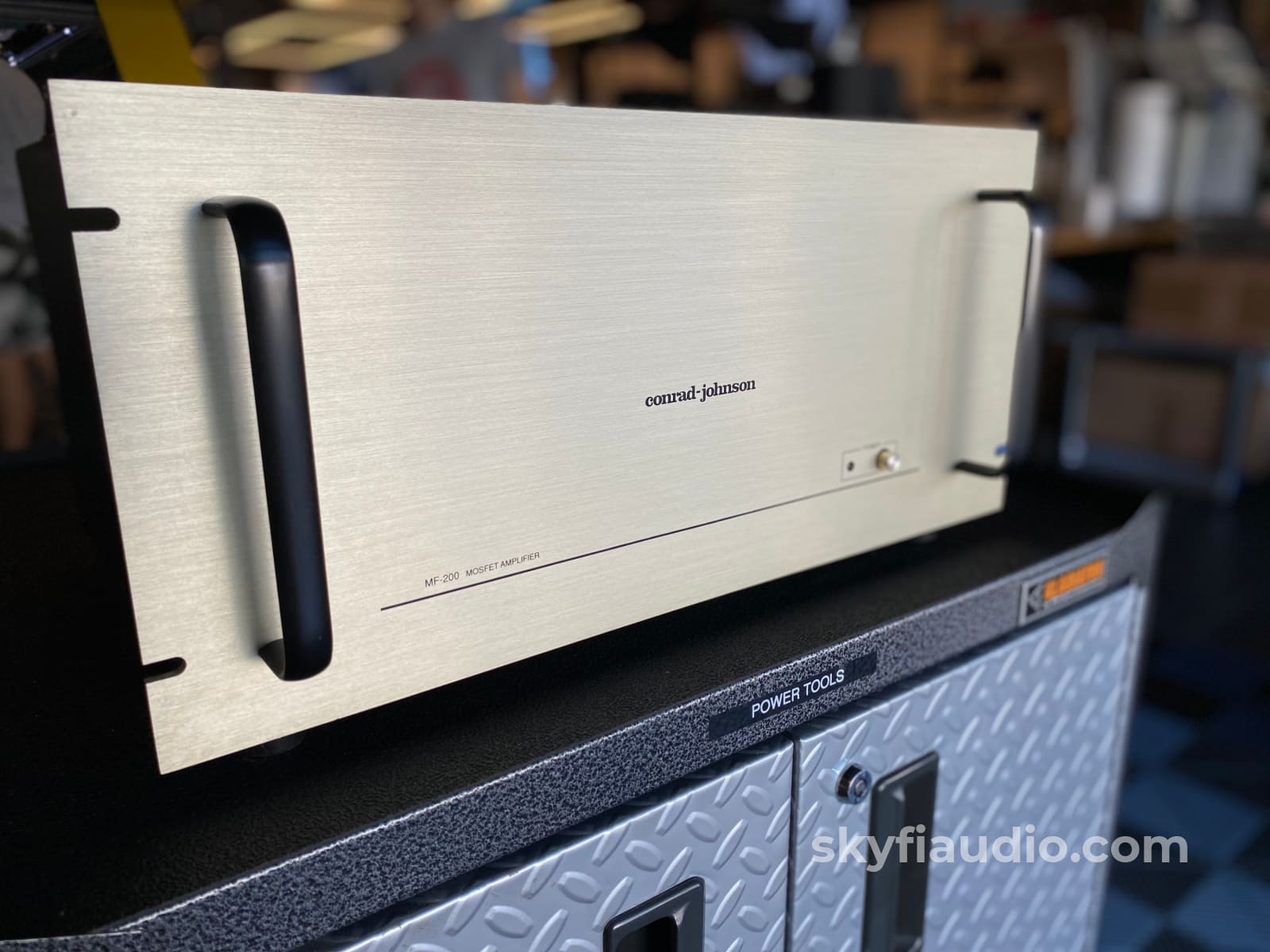
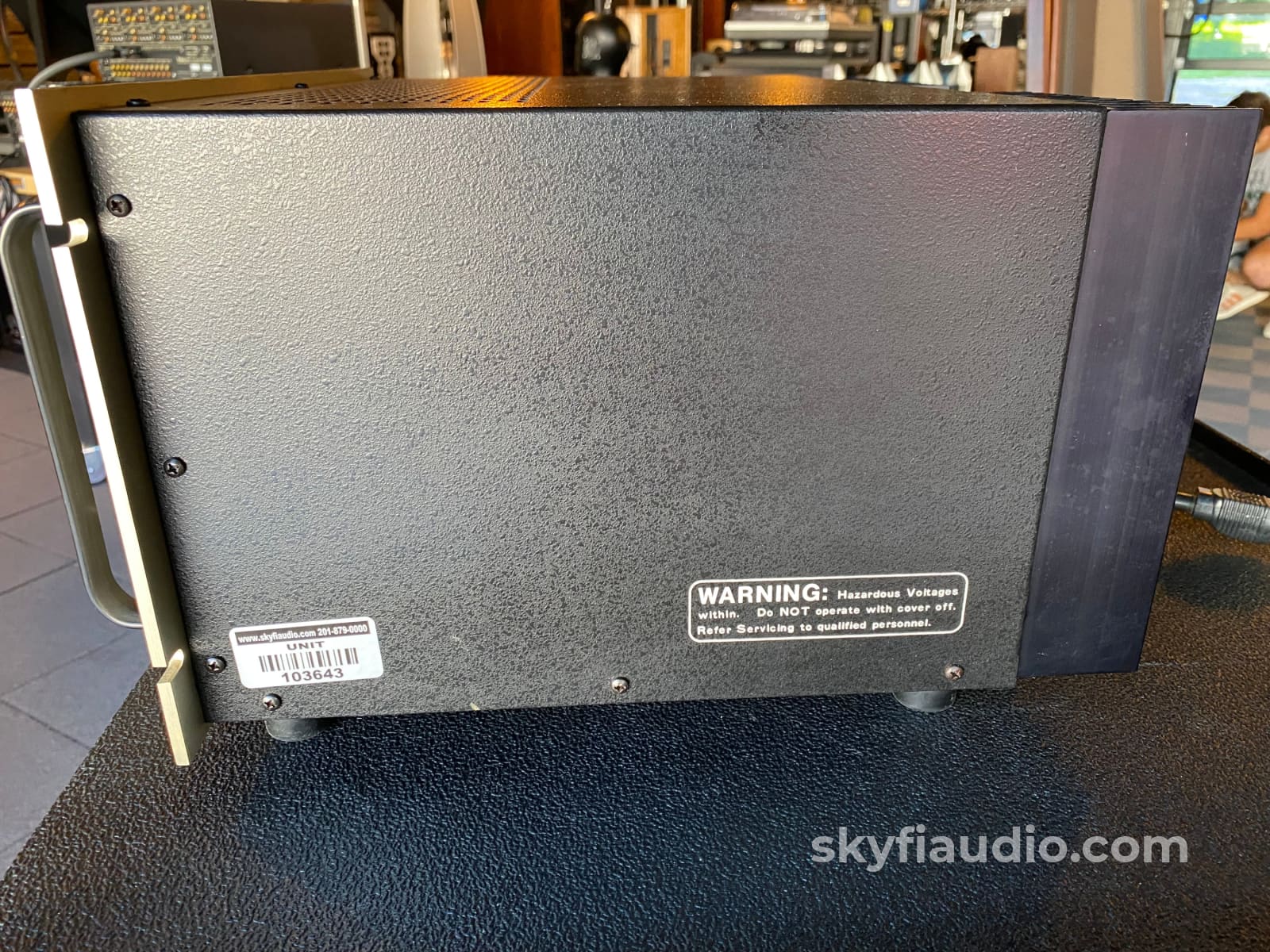
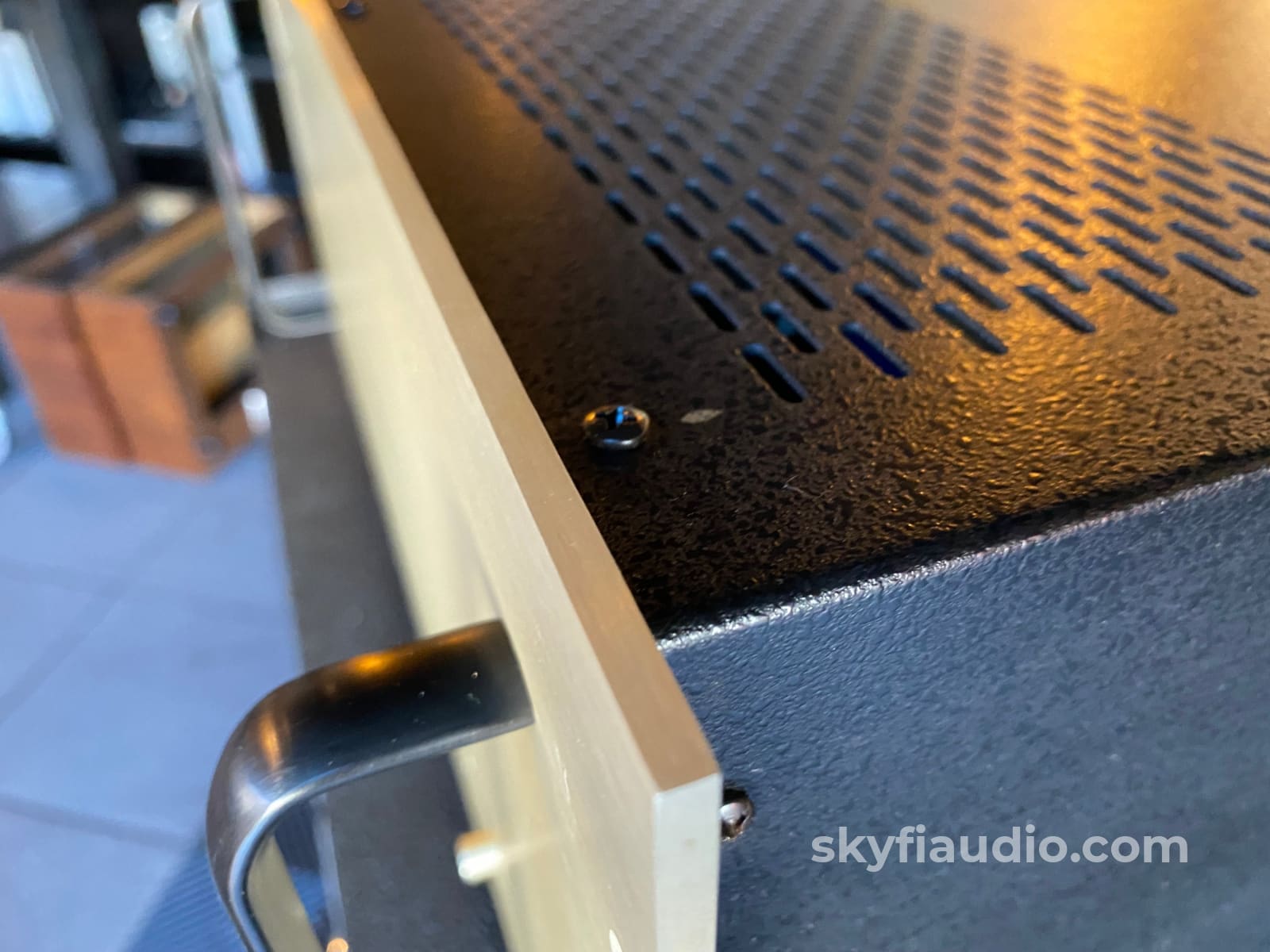
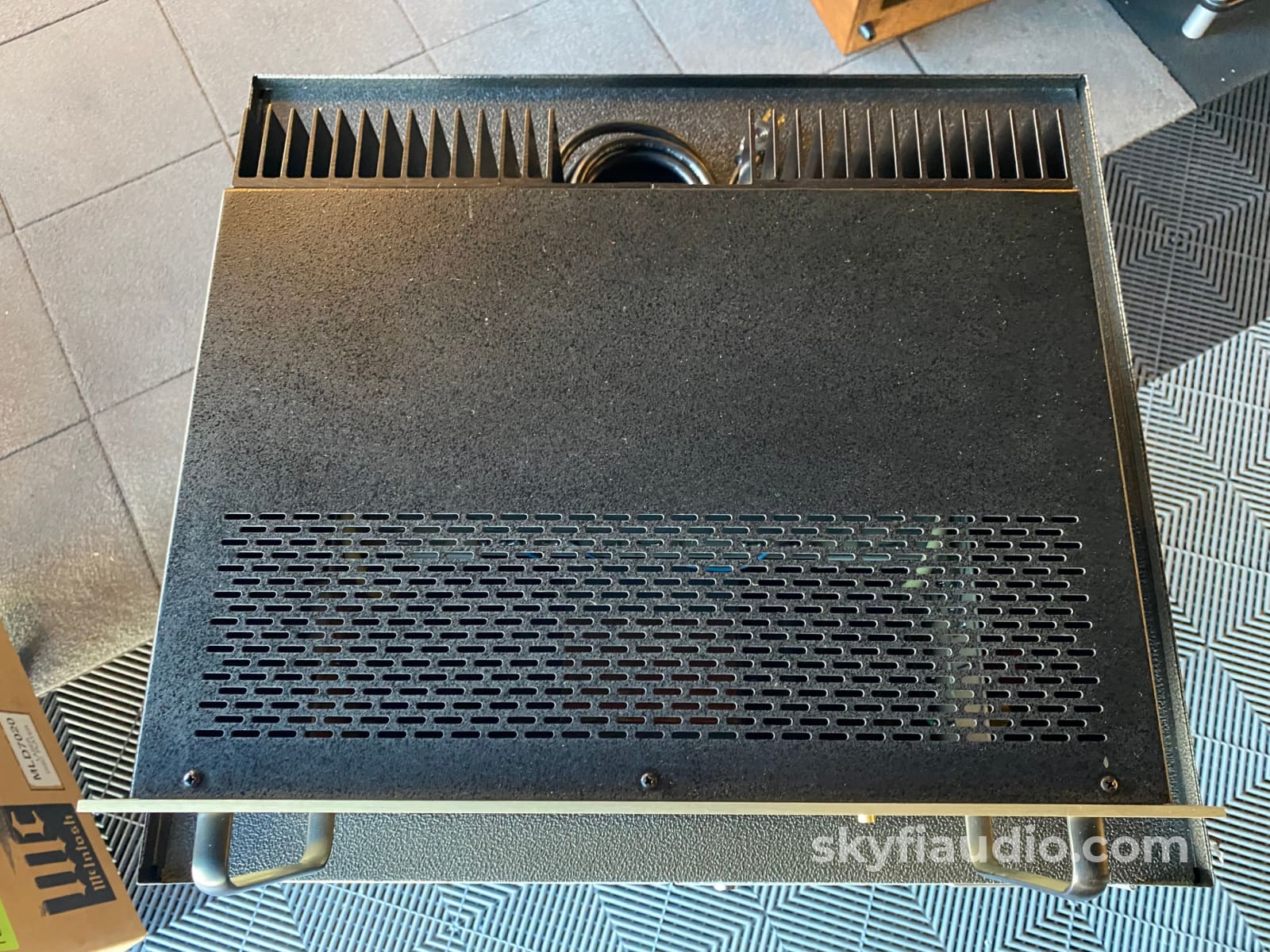
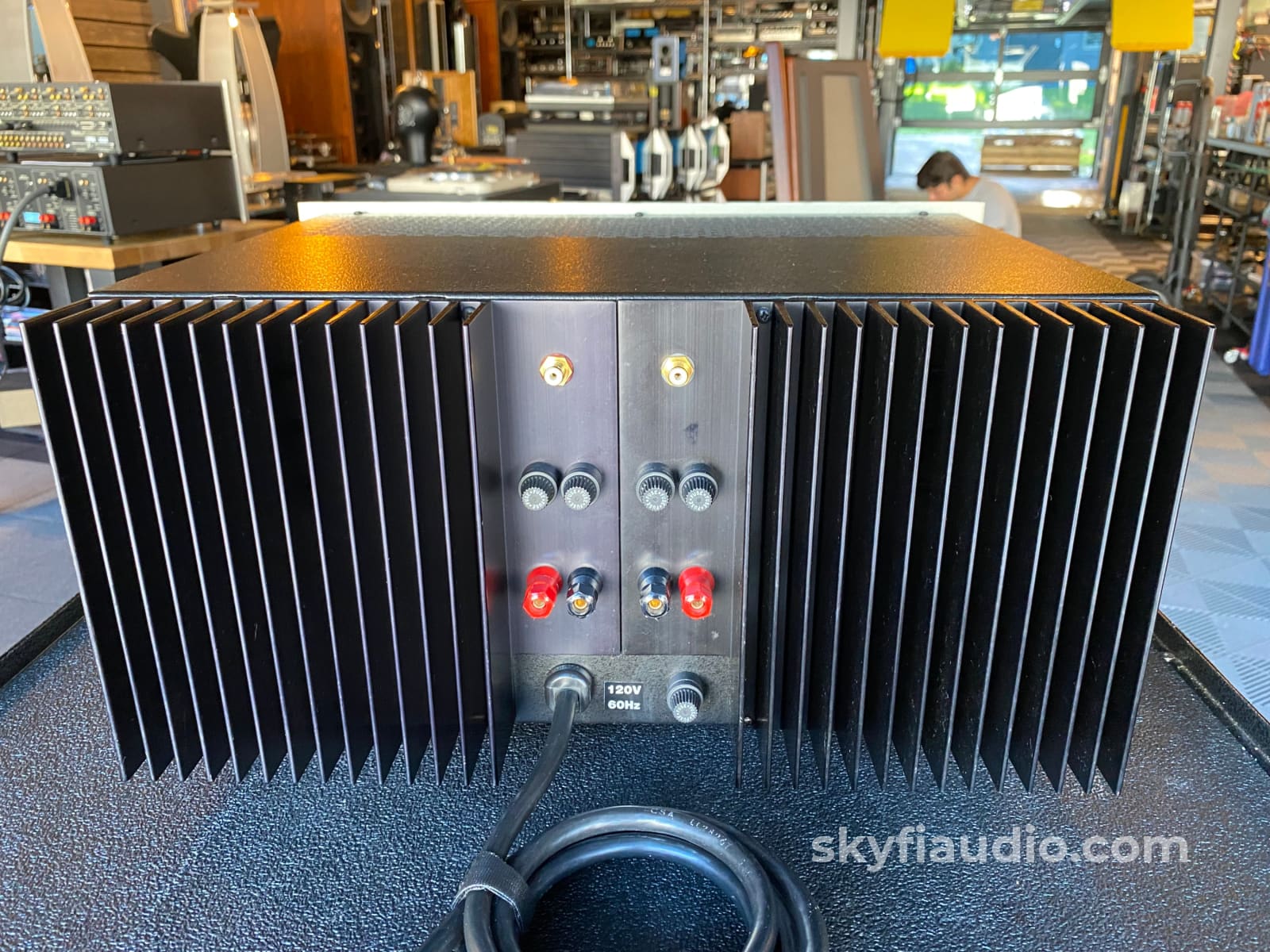
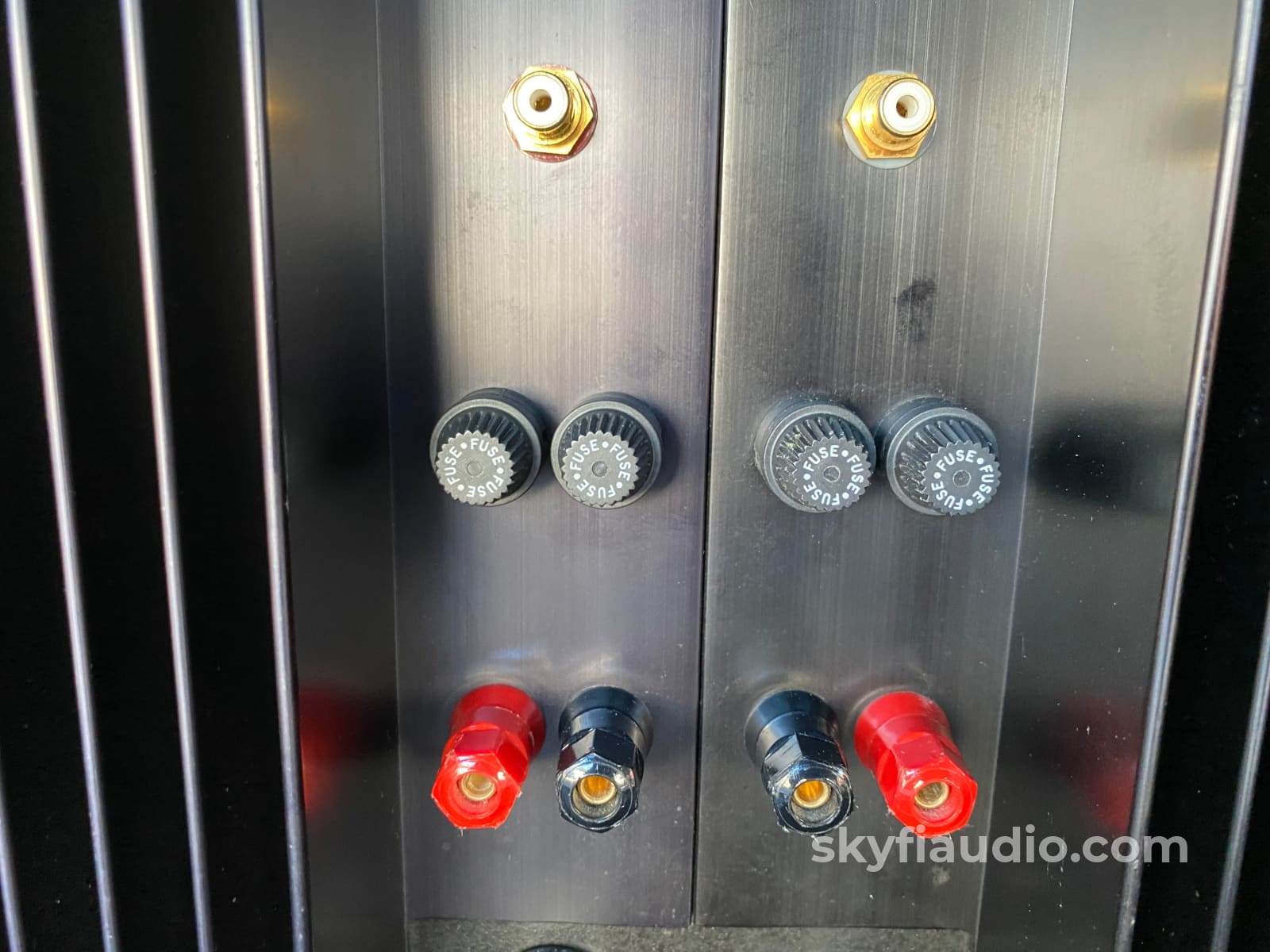
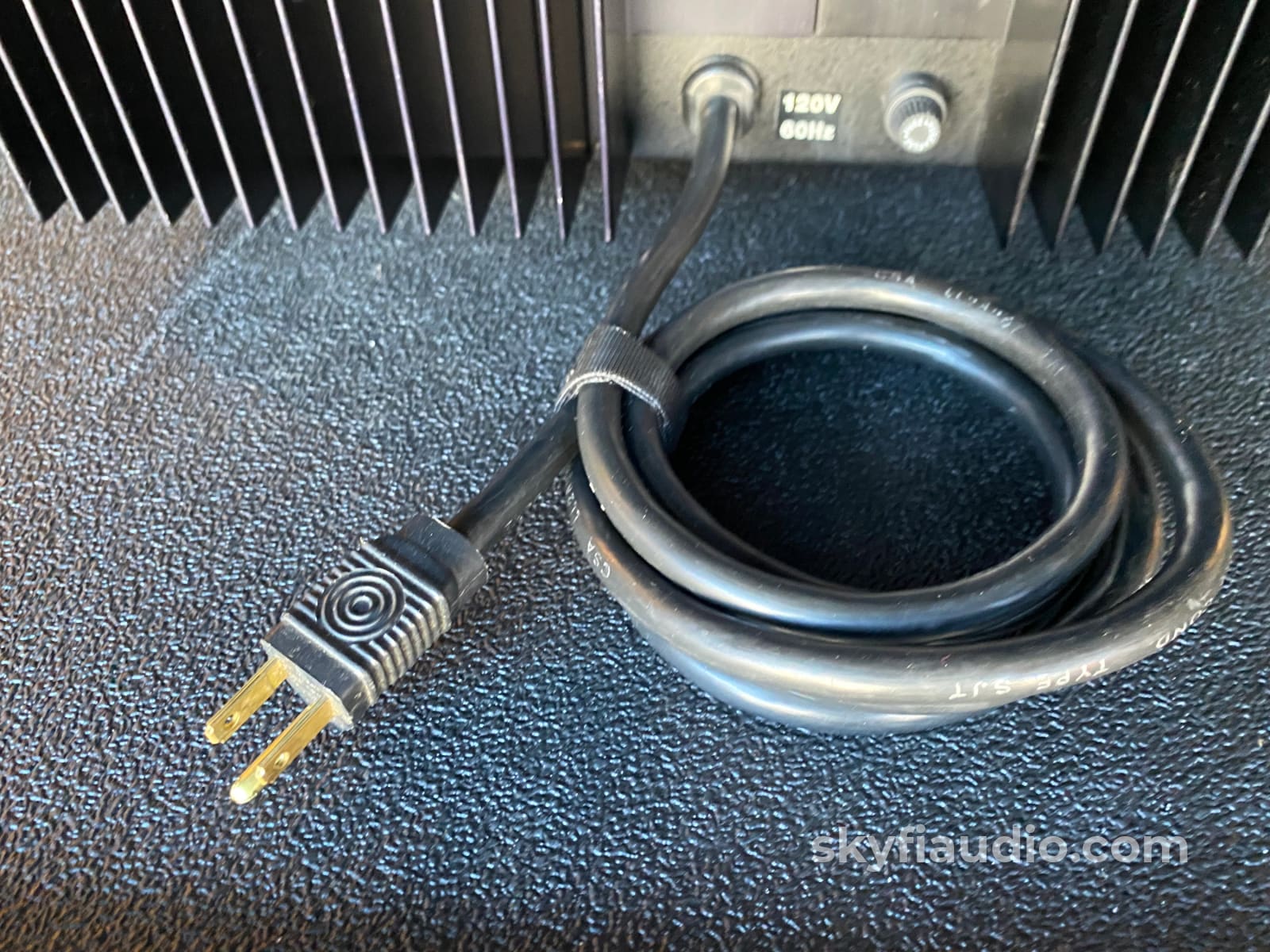
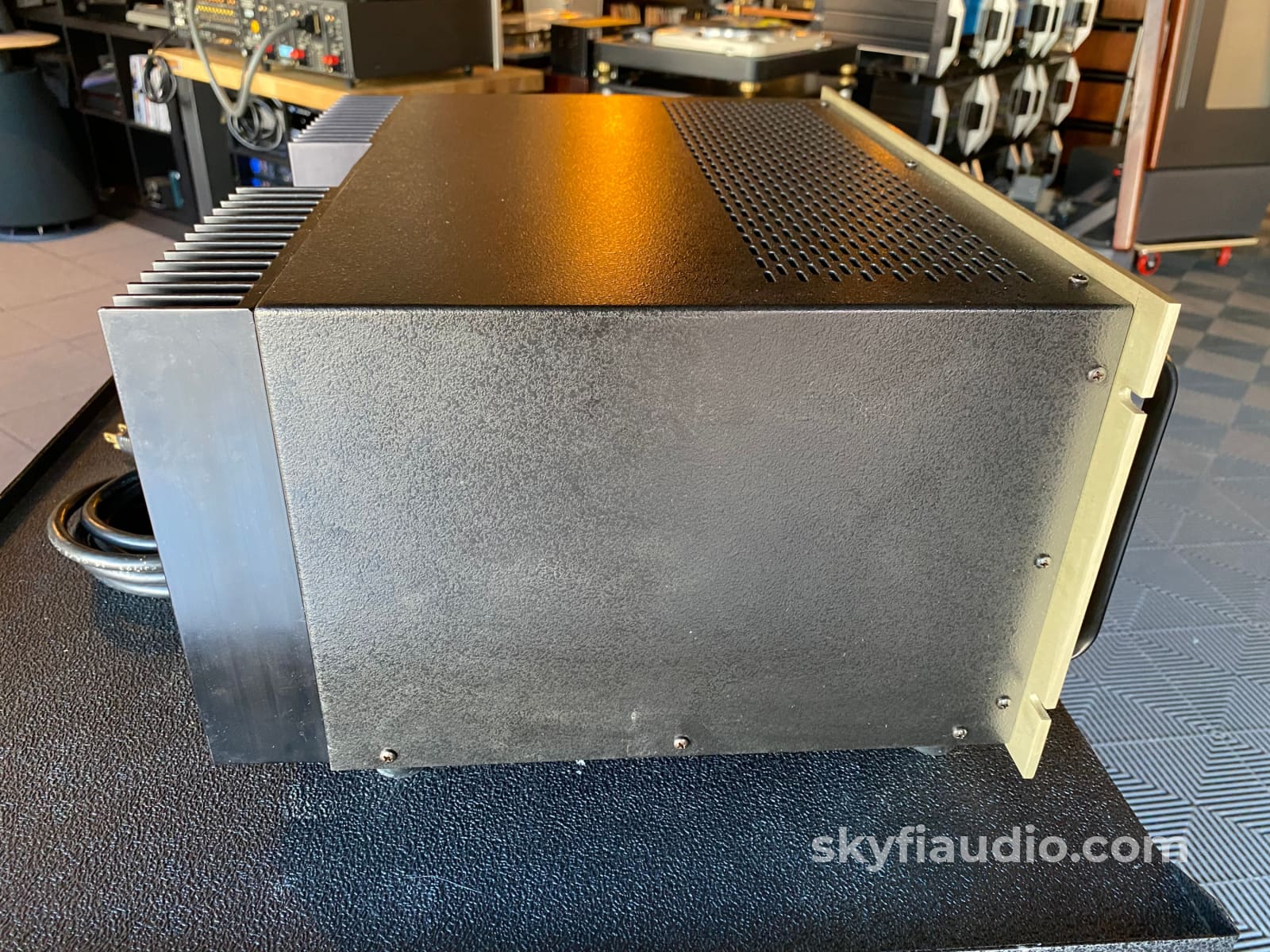
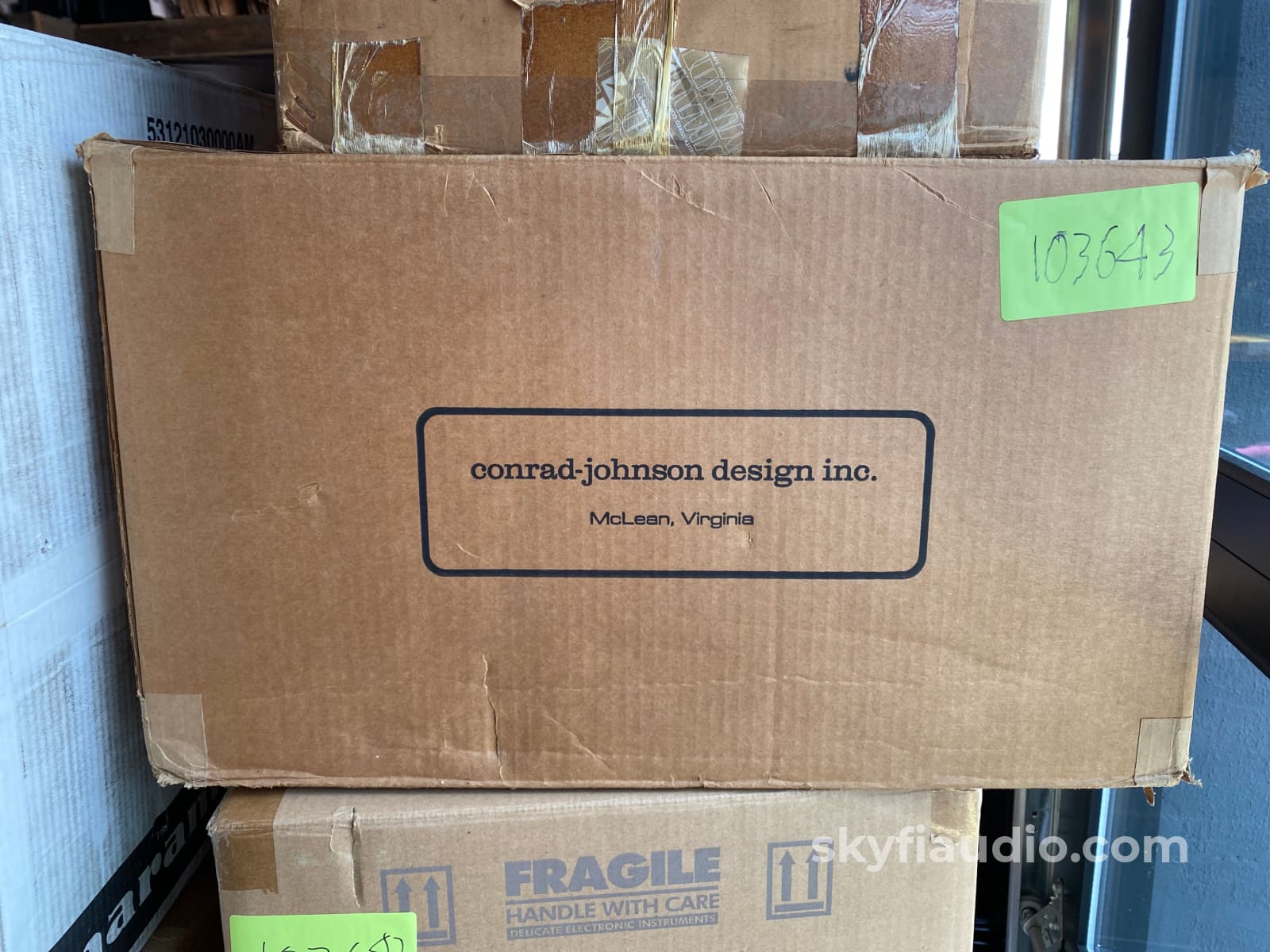
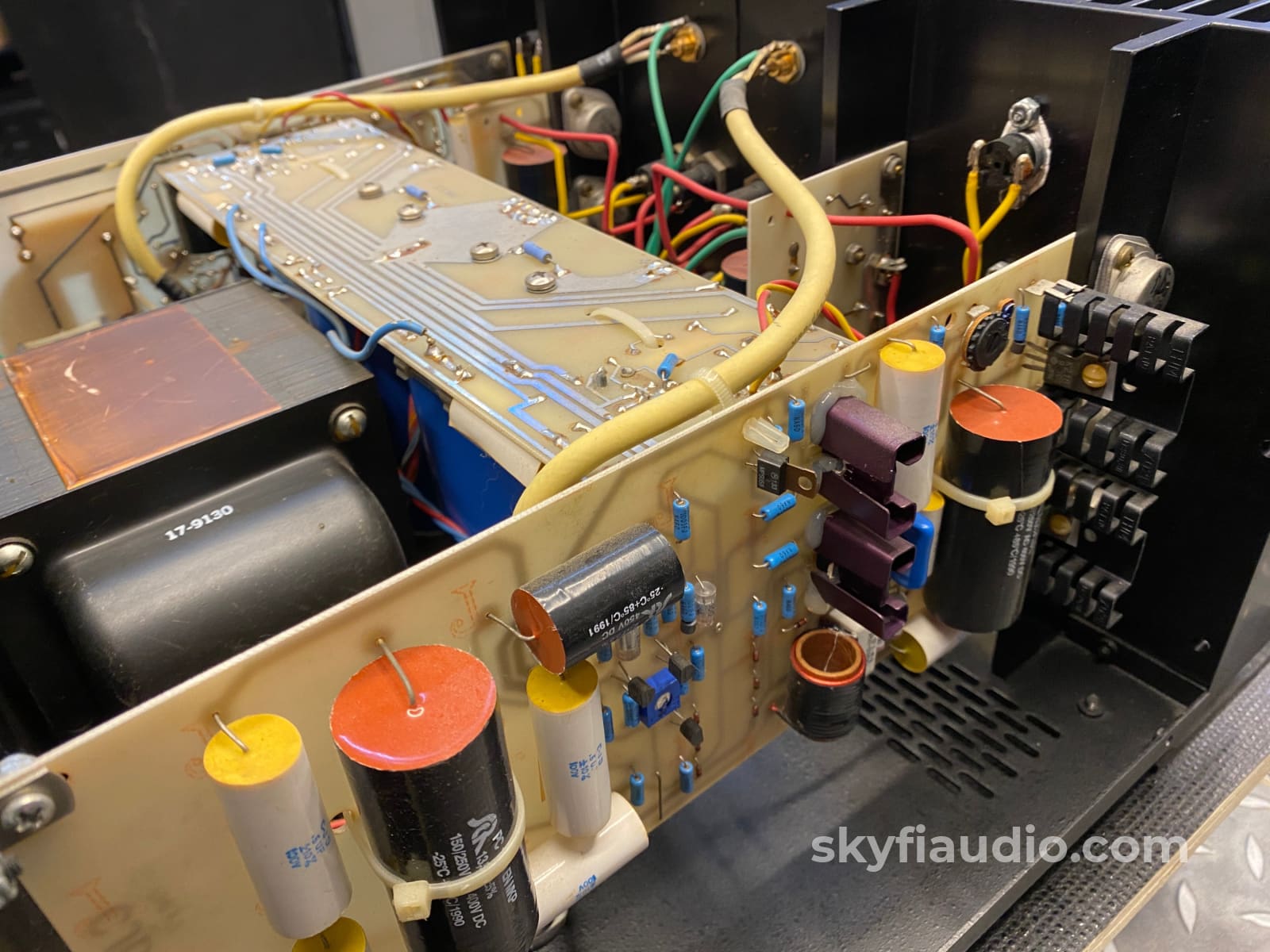
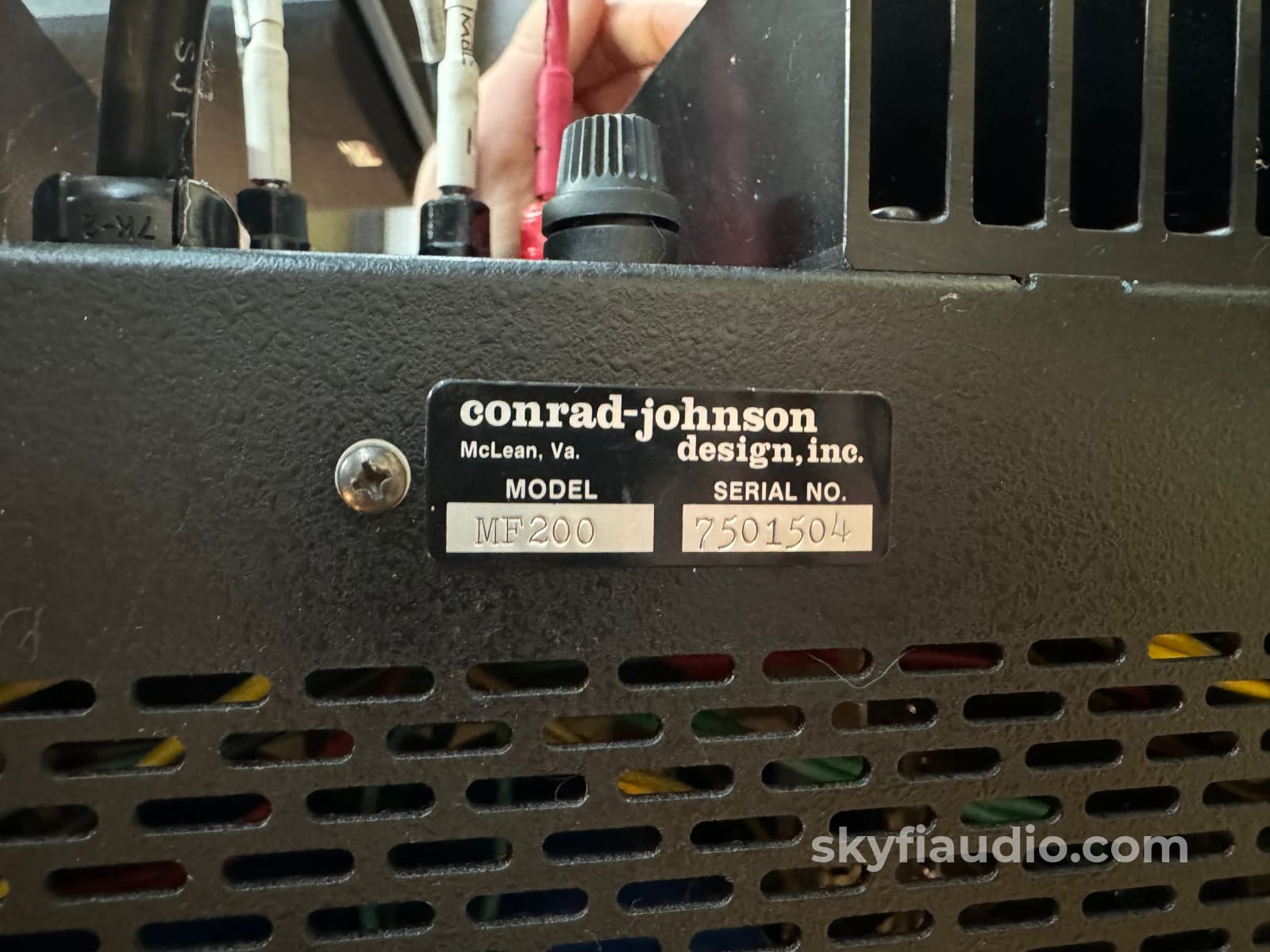
Conrad Johnson MF-200 Solid State FET Amplifier - USA Made
Free Shipping on Most Electronics - Excludes Speakers and Items Requiring Freight - Contiguous U.S. Only
Pickup currently unavailable at SkyFi 479

Conrad Johnson MF-200 Solid State FET Amplifier - USA Made
SkyFi 479
479 South Broad Street
Glen Rock NJ 07452
United States
The MF200 is a FET stereo power amplifier from legendary maker Conrad Johnson that's made right here in the USA.
Originally introduced in 1990 and capable of producing 200W per side all day long. It's also able to produce enough current to drive the most difficult speaker loads.
Tested in our lab where it performed flawlessly. Cosmetically it's very clean and sure not to disappoint, showing only slight signs of use.
This MF-200 will also ship in its original box for safe transport.
Click below to add our recommended matching cables from Kimber Kable, all brand new as SkyFi is an official Kimber dealer.
Ascent Series Hero Analog Interconnects (PAIR) - RCA Ultraplate or WBT Connectors
Kimber Kable - Bi-Wire Speaker Cables
More from Conrad Johnson:
The MF80 was the first solid state power amplifier bearing the conrad-johnson name. It was soon followed by the very similar, but more powerful, MF200 FET.
These amplifiers were the result of more than a decade of research by conrad-johnson into the application of solid-state devices to the reproduction of music.
The MF80 & MF200 used a similar circuit and differed in their power output-the MF80 delivered 80 watts per channel RMS & the MF200 delivered 200 watts per channel RMS. FET’s (Field Effect Transistors) were chosen as the basic circuit element of these designs because of their absence of the annoying odd-order harmonics that plagued so many transistor designs. Minimal negative feedback was used which obviated the typical overshoot and ringing associated with the “transistor sound” of other amplifiers. Parts specification met cj quality standards throughout. All capacitors were polypropylene and cjd polystyrene with the exception of the power supply filter caps. All resistors were 1% metal-oxide deposited on glass construction.
The MF80 & MF200 achieved astonishing results for solid state designs and were often compared with the top tube amplifiers of the day.
From a 1990 Stereophile review written by Martin Colloms:
Technology
The MF-200 is a low-feedback design intended to capture some of the character of tube technology. The MF-200's input is straightforward, comprising a differential J-FET pair buffered by an emitter follower. A voltage amplifier with current-source load leads to a complementary MOSFET driver. Three pairs of high-current MOSFETs make up the output stage. All sections prior to the final output are fed from regulated DC so that pure clipping is defined by the driver and not by the output. Faster recovery should result. Though the MF-200 is a feedback design, it is stated to use "uncommonly low feedback." Generously sized electrolytic reservoir capacitors are present in the shared power supply, while the critical large-value feedback decoupling component is a film type. No "electronic" protection is present; the unit relies on the natural robustness of the output devices, and on 5A voltage rail fuses.
SPECIFICATIONS
Power:
200 watts per channel RMS both channels driven into 8 ohms from 20Hz to 20KHz at no more than 1% total harmonic distortion or intermodulation distortion.
Sensitivity:
2.2V to rated power
Phase:
Phase correct (non-inverting)
Frequency response:
20Hz to 20KHz +0, -.25dB
Hum and noise:
98dB below full power output
Input impedance:
100K ohms
Dimensions:
15.63D x 19W x 8.75H inches
Weight:
59 lbs.
Fuses:
There are 5 user replaceable fuses in the MF200. The four fuses above the output jacks are power supply fuses, type 3AG 5 amp fast-blo. The ac line fuse is a type 3AG 10 amp slo-blo (7 amp slow blow for 220V or 240V amplifiers). NEVER REPLACE A FUSE WITH A VALUE OR TYPE DIFFERENT FROM THAT ORIGINALLY SUPPLIED BY THE FACTORY. In the event of a fuse blowing repeatedly, contact your dealer or the conrad-johnson service department.
Conrad Johnson MF-200 Solid State FET Amplifier - Owners Manual
The SkyFi Testing Process for Solid State Amplifiers:
We start with a visual inspection of all internal components to make sure that there are no signs of heat stress or damage. Capacitors are checked for telltale signs of predictive failure including bulging, shrunken wrappers, or physical leakage. We also inspect the PCBs for discoloration from resistors or transistors that may have been running hot. On vintage units we often spot check select capacitors for value and ESR.
If the amplifier passes visual inspection, we move on to a controlled power on sequence using a Sencore safety analyzer to monitor current draw in real time. Once the amplifier is determined to be safe to operate, we connect it to full AC mains for function and power testing. We connect the speaker outputs of the amplifier to a Sencore PA81 Power Analyzer which acts as a dummy load, DC offset monitor, and oscilloscope interface. We start with a low level 1KHz test signal at the amplifier’s input and slowly increase its amplitude while monitoring the output on an oscilloscope for signs of noise, clipping, distortion, or improper channel balance. We continue increasing the signal level until the amplifier reaches clipping. At this point we take an output power measurement and compare it to the spec sheet of the amplifier to verify proper performance. If the device under test has both balanced and single ended inputs they are both tested at this time. We finish off the bench evaluation with a 1KHz square wave check and a 20Hz to 20KHz sine sweep to assess the amplifier’s frequency response characteristics. This battery of tests will usually reveal if the amplifier has any issues that need further attention.
Before the device leaves the bench, we perform a listening test with actual music using a variety of preferred test tracks. Our benches are outfitted with familiar monitor speakers which help us identify inconsistencies that will not always show up on our test gear. The main things that we are listening for are hum or noise with no signal present, proper center image, clicks, pops, or any other obvious undesirable audio characteristics.
If the unit passes all of these tests it is moved to our long term testing rig where we simulate real word operating conditions for 6-8 hours. This allows us to monitor the unit for signs of thermal runaway or intermittent issues that only crop up when the unit has fully come up to temperature.
|
Item |
Included |
|
Original Box |
Yes Included |
|
Manual |
Not Included |
|
Remote |
Not Applicable |
|
Cables |
Yes - Power Only |
|
Physical Condition (Info Here) |
7 / 10 |
|
Working Condition |
10 / 10 |
Choose options















